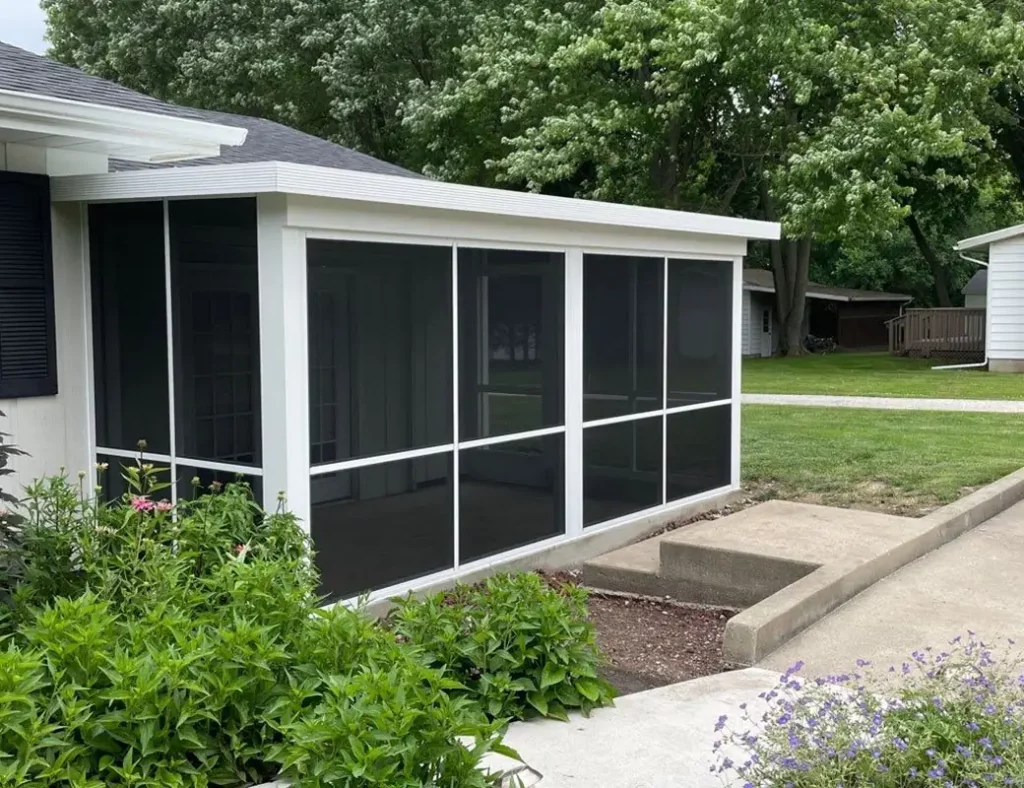Discover the true cost of composite garden rooms and why they’re revolutionizing outdoor living spaces – from premium materials to long-term value, get the complete financial picture before you invest.
Understanding Composite Garden Room Basics
Composite garden rooms represent the cutting edge of outdoor living space technology, combining modern materials with innovative construction techniques. These structures utilize advanced composite materials, primarily consisting of a blend of recycled wood fibres and high-grade polymers, creating a robust and durable alternative to traditional timber construction. The surge in popularity of composite garden rooms can be attributed to their exceptional durability, with studies showing they can last up to 30 years with minimal maintenance. The composite materials used offer superior resistance to weathering, UV damage, and pest infestation, making them an increasingly attractive option for UK homeowners seeking long-term solutions.
Base Price Ranges for Composite Garden Rooms
- Entry-Level (10-15m²): £15,000 – £25,000
- Mid-Range (15-25m²): £25,000 – £40,000
- Premium (25m²+): £40,000 – £60,000+
These price ranges reflect 2024 market rates, with variations depending on design complexity, material quality, and regional factors. Recent market analysis shows that composite garden room installations have increased by 45% since 2022, indicating growing consumer confidence in these investments.
Core Cost Components
The foundation of your composite garden room typically accounts for 15-20% of the total budget, including groundwork preparation and concrete base installation. Structural elements, comprising the composite framework and cladding, represent approximately 30-35% of the overall cost. High-performance insulation, crucial for year-round comfort, adds another 10-15% to the total investment. Premium material considerations, such as enhanced thermal barriers and superior grade composites, can increase these base costs by 20-25%.
Additional Features That Impact Price
- Glazing Options: Double-glazed windows and doors (£200-£800 per unit)
- Electrical Installation: Basic package (£1,000-£2,000), Advanced setup (£2,000-£4,000)
- Plumbing: Water connection and basic facilities (£2,500-£5,000)
- Interior Finishes: Basic (£1,500-£3,000), Premium (£3,000-£7,000)
- Climate Control: Air conditioning/heating systems (£1,000-£3,000)
Installation and Labor Costs
Professional installation typically ranges from £2,500 to £5,000, depending on the project’s complexity and location. Installation timeframes average 5-10 days, with labor costs varying significantly by region. London and the South East command premium rates, often 20-30% higher than other UK regions. The installation process includes site preparation, assembly, utility connections, and finishing work, with experienced teams typically charging £200-£300 per day per person.
Planning Permission and Building Regulations
- Planning Application Fees: £206-£462
- Building Control Applications: £300-£750
- Structural Engineer Reports: £500-£1,200
- Site Surveys: £350-£600
Most composite garden rooms fall within permitted development rights, but it’s essential to verify local regulations. Recent changes in 2024 have simplified the approval process for garden rooms under 2.5m in height.
Long-Term Value Considerations
Composite garden rooms offer exceptional long-term value, with maintenance costs averaging just £100-£200 annually, compared to £500-£1,000 for traditional wooden structures. Energy efficiency ratings typically show 25-30% better performance than conventional garden rooms, leading to reduced heating and cooling costs. Property value increases of 5-10% have been reported following the installation of high-quality composite garden rooms.
Financing Options and Payment Plans
- Direct Purchase: Full payment with potential discounts
- Finance Plans: 0% APR for 12-24 months (subject to status)
- Personal Loans: Competitive rates from 3.9% APR
- Deposit Requirements: Typically 20-30% of total cost
Hidden Costs to Consider
Beyond the obvious expenses, several hidden costs can impact your budget. Site clearance and preparation can add £500-£2,000, depending on existing conditions. Utility connections might require additional groundwork, costing £1,000-£3,000. Planning consultancy fees, if needed, range from £500-£1,500. Insurance premium increases should also be considered, typically adding £50-£150 annually to existing policies.
Cost Comparison with Traditional Garden Rooms
While composite garden rooms initially cost 15-25% more than traditional wooden structures, the long-term savings are significant. Traditional wooden rooms require regular maintenance, repainting, and potential repairs, costing £5,000-£10,000 over ten years. Composite structures, meanwhile, maintain their appearance and structural integrity with minimal intervention, representing better value over their lifetime.
Making the Right Investment Choice
When evaluating composite garden rooms as an investment, consider the following key factors: initial budget allocation, intended use, required features, and long-term maintenance commitments. The average return on investment period is 5-7 years when factoring in property value increase and reduced maintenance costs. For optimal value, focus on quality materials, professional installation, and proper planning permission compliance. Consider future needs and potential property resale value when making your final decision.
FAQ
What is the longest lasting raised garden bed material?
Raised Garden Beds Can Last a Couple Years to a Lifetime Here’s the short answer based on the type of material used for the raised bed: WOOD RAISED BED: 5-10 years. METAL RAISED BED: 30 years. STONE RAISED BED: lifetime.
Do garden rooms need a concrete base?
A base is still needed if the ground where the garden room will be placed is uneven or sloped. In such a case, the built-in foundation alone may not provide sufficient stability. A concrete slab or paving slab base would be necessary to level the ground.
What is the best landscape fabric to use in garden?
We especially like the Dewitt 12-Year Landscape Fabric, our best long-lasting pick. There are also landscape fabrics, including our best overall pick, the ECOgardener Pro Garden Weed Barrier, that give you the best of both worlds by combining two layers: One woven and one non-woven.
What is the best material for garden rooms?
Exterior. Breathable Membrane, Siberian Larch or Red Cedar Cladding and a rubber roof provide a weather tight finish that will last.
Are composite garden beds safe?
Wood plastic composites (WPC) wont leach chemicals into the ground. Unlike CCA pressure-treated wood that can leach harmful chemicals into the soil, WPC is safe for use as garden beds and planters. No harmful or toxic chemicals will affect flowers, plants or vegetables.
Sources
[1] https://www.envirobuild.com/blog/garden-room-construction
[2] https://www.eurocell.co.uk/garden-and-outdoor/garden-rooms
[3] https://www.compositegardenbuildings.co.uk/garden-rooms-range/


